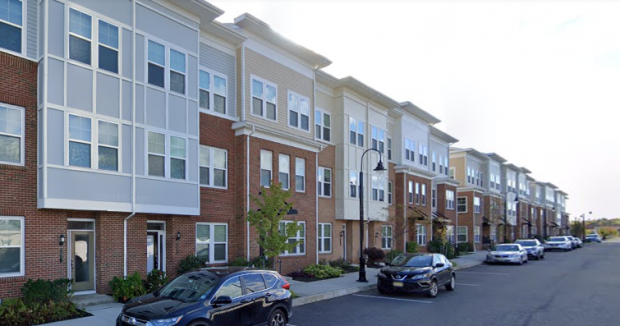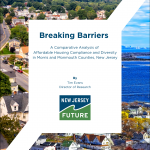New Jersey Future Blog
A Guide to Diversifying Housing Options for an Aging Population
August 11th, 2020 by New Jersey Future staff
A new report by New Jersey Future, Municipal Strategies to Diversify Housing Stock for an Aging Population: A Case Study Report, is part of New Jersey Future’s Creating Great Places to Age program. The program grew out of New Jersey Future’s 2014 report, Creating Places To Age in New Jersey, which identified a mismatch between where many older New Jerseyans are living and the land use characteristics that actually make a place “aging-friendly.” Subsequent work has focused on identifying places with aging-friendly land use patterns (compactness, mixed-use downtowns, a walkable street grid) and assessing their ability to accommodate older residents, especially in terms of whether they provide the types of housing options that older people are likely to want as they seek to downsize.
In line with the zoning policies of most municipalities in New Jersey, a disproportionate amount of housing in most non-urban communities is designated for one family and tends to be built on large lots. This pattern of development, while ideal for some, incentivizes development of large homes, excludes residents with lower incomes, and limits the options for older residents. Older New Jerseyans, who are more likely to be housing cost-burdened than older residents in any other state, stand to benefit from more housing options. But they aren’t the only residents who would benefit. Diversifying housing options benefits residents of all ages by creating compact and sustainable mixed-use and pedestrian-oriented downtowns; and by promoting mixed-income, multimodal, and mixed-age neighborhoods that are engaging and vibrant. New Jersey’s high-cost housing market has been restrictive for residents of all ages. It has impeded Millennials as they hope to move out and start families, as well as retiring Baby Boomers who want smaller and less expensive homes that are easier to maintain.
The report outlines some of the strategies that municipalities can adopt to accommodate a wider range of housing. While these options are particularly helpful for meeting the needs of older residents, they can serve people of all ages. Case studies in the report describe how five municipalities throughout New Jersey have each implemented a strategy, providing a roadmap for other local governments or advocates. To formulate the report, New Jersey Future compiled a limited list of municipalities that have implemented some kind of strategy that resulted in more types of housing options being built or permitted. Although the list is not inclusive of all strategies implemented by all New Jersey municipalities, it demonstrates that towns are capable of implementing a variety of strategies in a variety of ways that are suitable to their needs. A table of towns and strategies is included in the appendix.
The report concludes with some implications for interested municipalities and housing advocates. For example, one indicator of success appears to be municipal engagement with local residents. Inclusive planning and implementation can help towns enjoy greater public support. Additionally, in some cases, municipal actions were supported by the state through grants and technical assistance, particularly when the state and the municipality both embraced smart growth goals—growth strategies that favor redevelopment of existing built environments, reliance on public transit, preservation of natural areas and ecosystems, and equitable, safe communities for all residents. Although local governments determine most land use decisions under the Municipal Land Use Law, state policy has an important role to play in how those decisions are made. State legislation could require municipalities to permit multifamily housing, as Oregon did in 2019.1 To concentrate development near mass transit, the state could require multifamily housing and mixed-use near transit, similar to proposals in the California legislature that ban single-family detached zoning near transit and make the minimum required density a fourplex.2 Both states also have enacted laws allowing the construction of accessory dwelling units statewide. Municipalities hoping to create sustainable and attractive communities cannot ignore the need for a more diversified and increased housing stock, or else they risk losing residents who comprise the workforce, tax base, and consumer activity that supports local economies.3

Main Street – North Brunswick, New Jersey (Google Maps)
1 Slate, 2019, “Legalize It.” https://slate.com/business/2019/07/oregon-single-family-zoning-apartments-housing.html
2 Los Angeles Times, 2018, “Get ready for a lot more housing near the Expo Line and other California transit stations if new legislation passes.” https://www.latimes.com/politics/la-pol-ca-housing-transit-bill-20180104-story.html
3 AARP, “The Longevity Economy Outlook.” https://www.aarp.org/research/topics/economics/info-2019/longevity-economy-outlook.html
Related Posts
Tags: aging-friendly, Case study, diversity, report
















